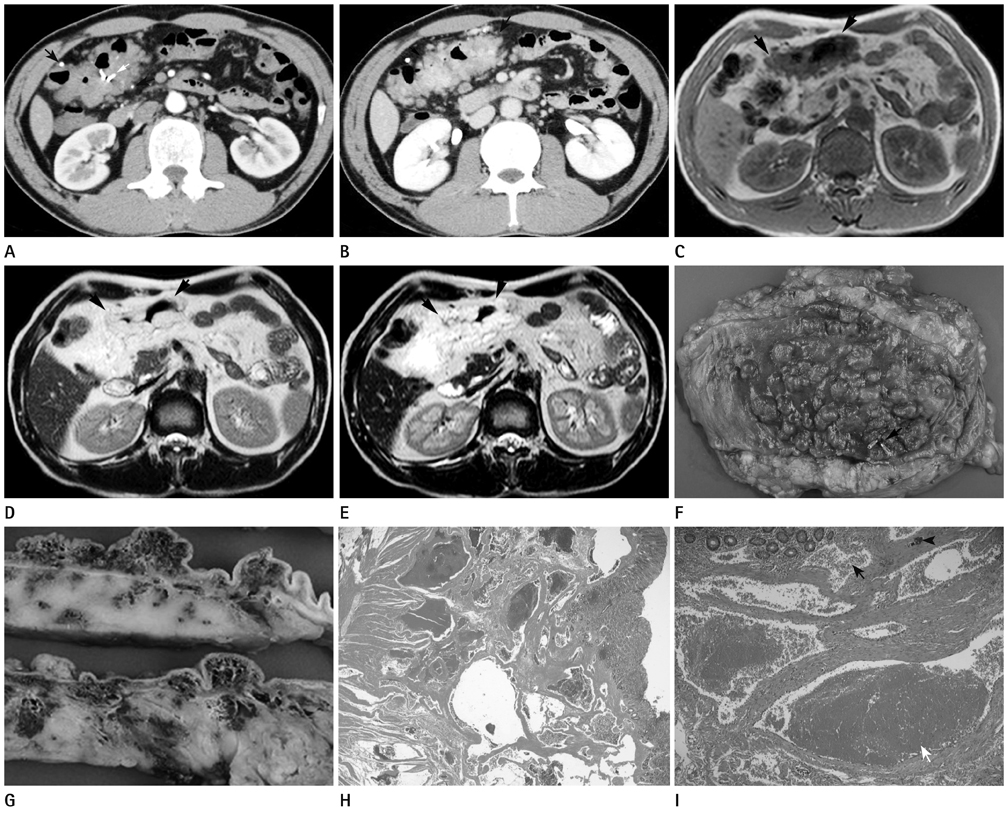J Korean Soc Radiol.
2013 Dec;69(6):465-468.
Imaging Findings of Cavernous Hemangioma Arising from the Transverse Colon: A Case Report
- Affiliations
-
- 1Department of Radiology, Seoul Paik Hospital, Inje University College of Medicine, Seoul, Korea. kyhkim7@hanmail.net
- 2Department of Pathology, Seoul Paik Hospital, Inje University College of Medicine, Seoul, Korea.
Abstract
- Diffuse cavernous hemangioma (DCH) of the large bowel is a rare disease and usually involves the rectosigmoid colon. There have been only a few reports on the CT and MR imaging findings of DCH of the large bowel which are helpful in its correct diagnosis. We report herein an asymptomatic patient with DCH of the transverse colon and describe the CT and MRI features of the colon.
MeSH Terms
Figure
Reference
-
1. Londono-Schimmer EE, Ritchie JK, Hawley PR. Coloanal sleeve anastomosis in the treatment of diffuse cavernous haemangioma of the rectum: long-term results. Br J Surg. 1994; 81:1235–1237.2. Demircan O, Sönmez H, Zeren S, Cosşar E, Bicakci K, Ozkan S. Diffuse cavernous hemangioma of the rectum and sigmoid colon. Dig Surg. 1998; 15:713–715.3. Lyon DT, Mantia AG. Large-bowel hemangiomas. Dis Colon Rectum. 1984; 27:404–414.4. Tanaka N, Onda M, Seya T, Furukawa K, Kumazaki T. Diffuse cavernous haemangioma of the rectum. Eur J Surg. 1999; 165:280–283.5. Iafrate F, Laghi A, Paolantonio P, Rengo M, Mercantini P, Ferri M, et al. Preoperative staging of rectal cancer with MR Imaging: correlation with surgical and histopathologic findings. Radiographics. 2006; 26:701–714.6. Amarapurkar D, Jadliwala M, Punamiya S, Jhawer P, Chitale A, Amarapurkar A. Cavernous hemangiomas of the rectum: report of three cases. Am J Gastroenterol. 1998; 93:1357–1359.7. Tung GA, Vaccaro JP, Cronan JJ, Rogg JM. Cavernous hemangioma of the liver: pathologic correlation with high-field MR imaging. AJR Am J Roentgenol. 1994; 162:1113–1117.8. Ashida C, Fishman EK, Zerhouni EA, Herlong FH, Siegelman SS. Computed tomography of hepatic cavernous hemangioma. J Comput Assist Tomogr. 1987; 11:455–460.


